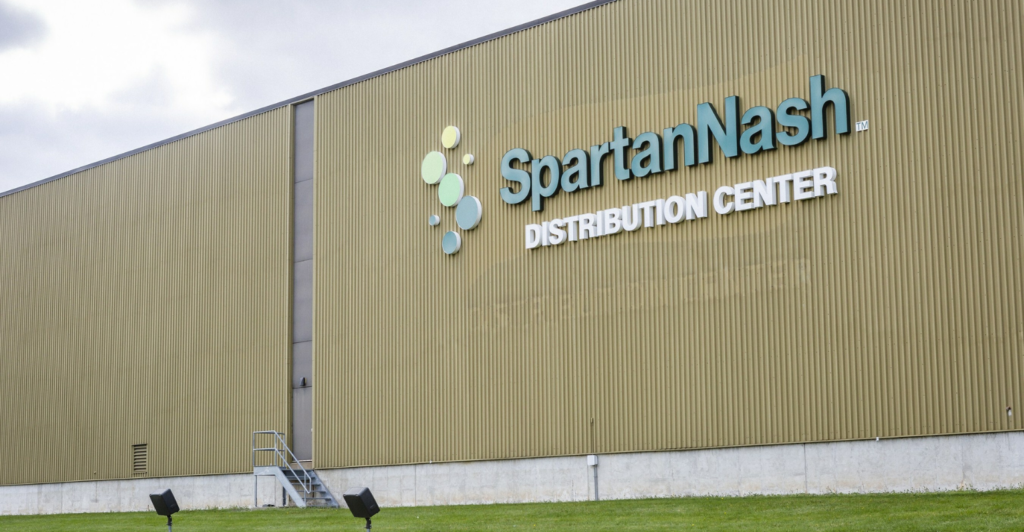SpartanNash said its profitability improved in the first quarter, despite pressures on sales in both its retail and wholesale segments.
Year-over-year net income was up 14.4% to $12.97 million in the 16-week first quarter, which ended April 20, compared with year-ago results. The company attributed the gains in profitability to a higher gross profit rate, which included a $9.2 million decrease in last in/first out (LIFO) inventory expenses, benefits from merchandising initiatives, and decreased incentive compensation. Operating earnings for the quarter totaled $30.62 million, up about 26% vs. year-ago levels.
“SpartanNash continues to prove that we can deliver, despite the challenging market dynamics,” said Tony Sarsam, president and CEO, in a conference call with analysts.
He said the company’s merchandising initiatives, which include enhanced category planning, better vendor engagement and programs, and leveraging AI-powered software to optimize pricing, are helping drive sales and expand margins. Private label continues to help drive sales and provide value for customers, Sarsam said, citing a 50 basis point improvement in private label penetration in Q1 vs. a year ago, and better-than-expected results from its recently introduced Finest Reserve by Our Family brand.
SpartanNash is also seeing more promotional support from vendors, with about 40% of the total volume coming through promotions, close to pre-COVID levels, although promotions vary from category to category. Frozen foods, for example, are one of the categories that have currently seen higher levels of promotional activity, said Jason Monaco, executive VP and chief financial officer.
However, sales for the quarter were down 3.5% to $2.81 billion, including a 3.6% decline in the retail division and a 3.4% decline in wholesale sales. Retail comparable-store sales fell 2.5%.
Monaco said the decline in retail comp-store sales was impacted by cuts in the SNAP food benefits program, which contributed to a 1.9% decrease in comps, as well as snowy weather conditions in the quarter, which he said contributed another 1% to the comp-store sales decline.
In the wholesale segment, the company said revenue declines were due to lower sales through its Amazon partnership, which Sarsam described as a “negative headwind” of 4.5% on wholesale revenues.
“Despite that challenge, we remain encouraged by our growth within our national accounts that partially offset the Amazon impact,” he said.
The company lowered wholesale operating expenses and expanded operating margins by 53% over year-ago levels, despite the revenue declines, Sarsam said.
SpartanNash maintained its earnings outlook for the full fiscal year but lowered its sales guidance. It now expects sales of between $9.5 billion and $9.7 billion, vs. a previous projected sales range of $9.7 billion to $9.9 billion. Last year, the company posted sales of $9.73 billion.


